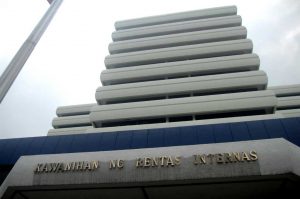THE Bureau of Internal Revenue (BIR) said the lack of supporting documents beyond a certain threshold on sales and purchases involved in a value-added tax (VAT) refund application will automatically bump the claim into the high-risk category.
“Sales and purchases determined to be ‘NSD’ or “no supporting documents” (e.g., a supporting document indicated in the schedules cannot be found in the physical documents submitted) during cursory checking of the completeness of the supporting documents shall not be considered as incomplete submission, but the same shall result in the disallowance of the unsubstantiated portion of the sales or purchases regardless of the risk classification,” the BIR said in a circular.
“However, in the event that the ‘NSD’ for sales and purchases exceeded at least 1% of the total amount of sales (for sale transactions) or total amount of claim (for purchase transactions), the application shall automatically be classified as high-risk and shall require 100% verification.”
Republic Act (RA) No. 11976 or the Ease of Paying Taxes Act introduced a risk-based approach in classifying VAT refund claims — low, medium, or high risk.
The BIR classifies VAT refund claims based on a points system that considers the size of the claim; the frequency of claims filed; the claimant’s tax compliance history; and other risk factors.
Those applying for refunds must submit documentation before they are assigned a risk level, the BIR said.
“The determination of the risk level of the VAT refund claim can only be established once the application is officially received by the appropriate BIR processing office, inasmuch as the amount of claim, period covered, frequency of filing, among others, are already ascertained.”
Under RA 11976, the bureau must process a VAT refund claim within 90 days from the time the processing office accepts the claim or application.
The process for refund claims include checking if the requirements and supporting documents for the sales and purchases of goods and services are complete; the determination of the risk level of a refund claim; and the processing and verification of medium and high-risk claims.
Low-risk claims will only be classified with complete documentation. Claimants in this category are not subject to the verification procedure for sales of goods and services as well as purchases and input tax, BIR said.
In a memorandum order dated Oct. 2, the BIR said high-risk claims include those were filed between April 27, 2024 and June 30, 2024; those filed by first-time claimants; and cases where the claimant cannot be located.
Refund claims classified as medium risk are subject to 50% verification of both the sales amounts and total invoices or receipts issued.
The BIR said input VAT claimed from local suppliers but identified as “cannot be located” or flagged under the Run After Fake Transactions program will not be granted a refund. — Beatriz Marie D. Cruz

